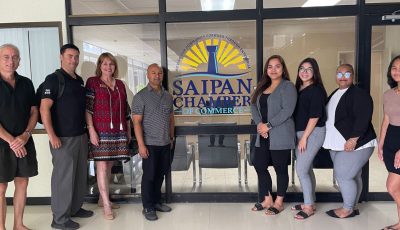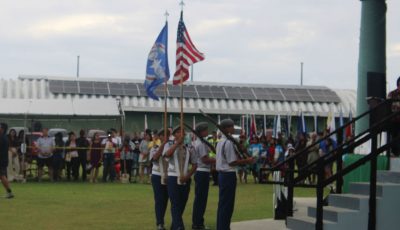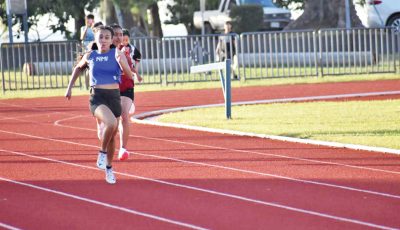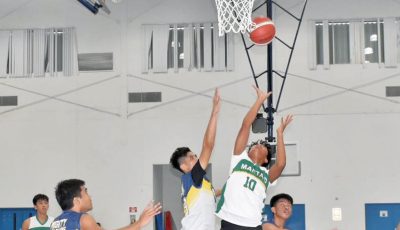MHS and SSHS participate in MINA program
- 1. Marianas High School is also now part of the Micronesia Island Nature Alliance’s Schools for Environmental Conservation program. (Contributed Photos)
- MHS students recycle water bottles.
- Saipan Southern High School’s Conservation Action Plan was to create a rain garden on campus to improve water quality.
- Two SSHS students water the rain garden on campus.
Marianas High School and Saipan Southern High School were also participants in the Micronesia Island Nature Alliance’s Schools for Environmental Conservation (SFEC) alongside Mount Carmel School, Kagman High School, Northern Marianas Academy, and Tanapag Middle School.
SFEC is a program that provides opportunities for students and teachers to learn about and work on a project that focuses on a specific environmental issue. This year’s theme was “Learning About, Interacting With, and Actively Conserving Saipan’s Watersheds.” The schools were to create a Conservation Action Plan (CAP) and implement it throughout the school year.
Marianas High School’s Conservation Action Planning Committee (CAPC) was the school team whose mission is to conserve valuable resources and raise awareness of environmental problems, through strengthening their school recycling program, holding campus and beach cleanups, planting trees around campus and initiating an “interschool environmental committee.” MHS’ school recycling program is designed to reduce the volume of trash by segregating the leftover cafeteria food, plastic bottles, bento lids and organizing them for disposal. They effectively reduced the space filling up a trash bag with over 300 bento boxes compared to 50 if they were not to segregate the debris. With the leftover food that is collected, distribution between local farmers and dog owners is done. Their idea for an interschool environmental committee is to collaborate with other schools, share best environmental practices, challenges and successes and coordinate events together.
Their club advisor, Mayolina Garcia shared “The best results will be obtained when teachers are able to integrate learning in the natural environment. Learning and understanding happens when the learners find the subject matter significant to them. As an Environmental Science educator for a number of years I feel obliged to let my students perceive the relevance of taking care of our environment. It is very rewarding joining them in their advocacy in the preservation of ecosystems, natural places and biological diversity on Saipan.”
Saipan Southern High School’s CAP was to create a rain garden on campus to improve water quality. Their project site had a lot of trash and broken ceramic pieces. The first task was to clean it out and fill the area with plants. They were able to obtain ferns, lemon grass, and ti-leaf, enough to plant in the area. Some of the challenges they faced were the number of volunteers to clean out the site and having the appropriate tools. But by the end of the year, the Youth Environmental Ambassadors (YEA) Club was able to clear and plant on half of the desired site. Their next steps will be to continue to water the plants until they are able to support themselves, plant more rain gardens on campus and use the collected broken ceramic pieces as stepping stones around the garden.
“This program charges the kids to create a solution based on evidence,” says Roy Adsit. Referring to the challenges that they faced to complete their CAP, he shared that “It’s important for the kids to learn that sometimes your best plans needs changes.” They were also inspired by MHS’s CAP and though they already recycle on campus, would like to recycle in the cafeteria as well.
According to Adsit, “This program helps me to teach the students lots of knowledge and some big life lessons, all while working hard and having fun!”































